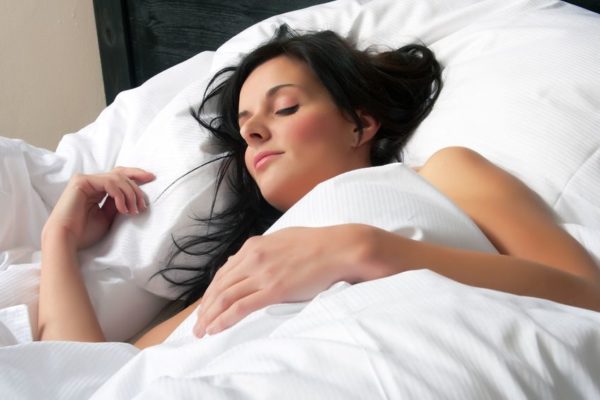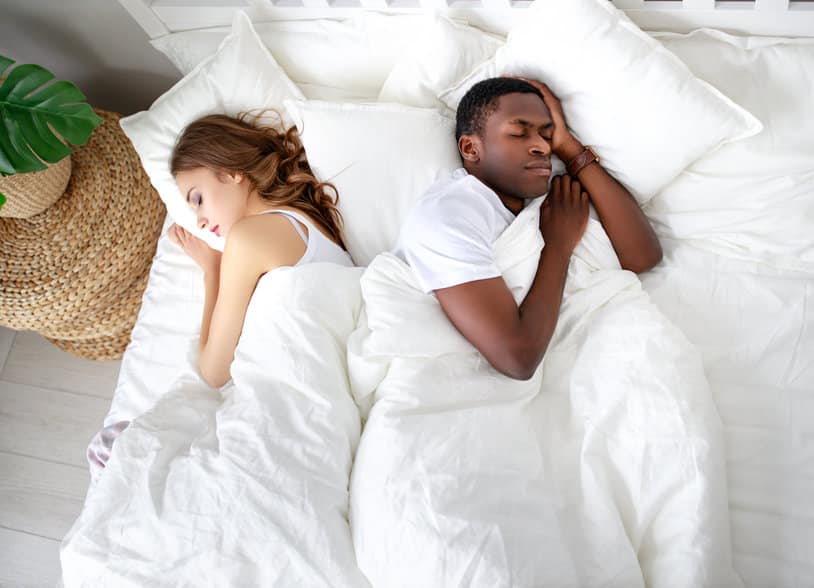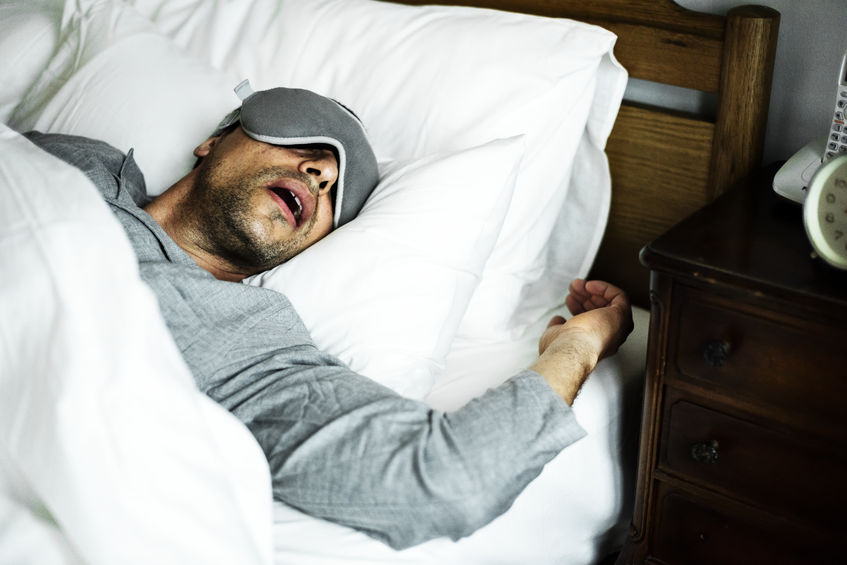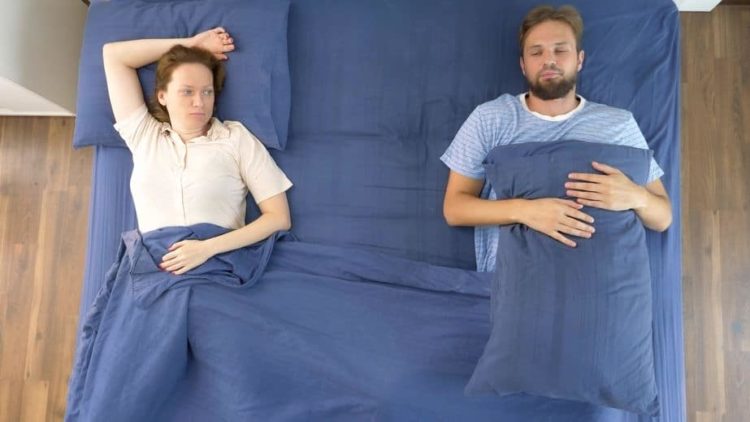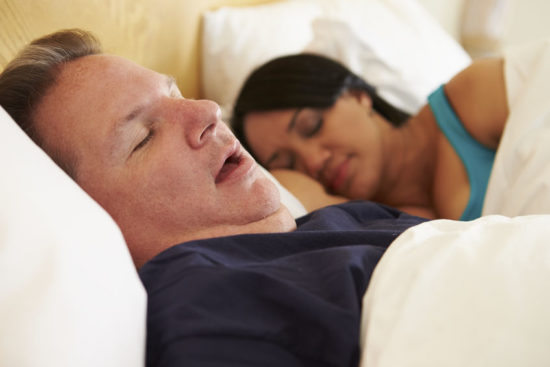By Jessica Scarpati –
Love him or hate him, Olaf was onto something. When viewers first encountered the magical talking snowman from Disney’s Frozen, he immediately shared an endearing fact: He likes warm hugs. Who can argue with that? Numerous studies have shown that a cozy cuddle causes our bodies to release more oxytocin and serotonin—chemicals associated with happiness and relaxation—while lowering levels of cortisol, the so-called stress hormone. Of course, there are only so many hugs you can solicit a day before seeming, well, a bit creepy. Little wonder then that interest is surging in a more self-service alternative: weighted blankets.
Designed to mimic the effect of being hugged or swaddled, weighted blankets look like ordinary bedding with one key difference: They’re filled with anywhere from five to 30 pounds of pellets, beads or similar materials. When laying underneath one, the blanket is heavy enough to create a feeling of gentle, evenly dispersed pressure on the entire body while still allowing some movement.
Dubbed by the Chicago Tribune as the “it” gift of the 2019 holiday season and topping many Valentine’s Day gift lists this year for women and men alike, weighted blankets have recently earned an almost cult-like following. One company, Bearably, reported that after restocking its inventory the day after Christmas, its signature weighted blankets sold out within three hours.
Enthusiasts swear by these ultra-comforting comforters’ ability to soothe anxiety and facilitate easy, tranquil and uninterrupted sleep. But they are not cheap at an average price to $100 to $300 each and they are not recommended for young children and adults suffering from certain conditions. They, however, may be worth considering for those suffering through sleepless, anxiety-filled nights.
The weighted blanket theory is based on a concept called deep pressure stimulation (sometimes called deep touch pressure or deep pressure therapy), which claims the application of gentle pressure can calm an overstimulated nervous system. The technique was popularized 30 years ago by autism researcher and animal behaviorist Temple Grandin.
“The tickle of a fly landing on the skin may cause a cow to kick, but the firm touch of the farmer’s hands quiets her. Occupational therapists have observed that a very light touch alerts the nervous system, but deep pressure is relaxing and calming,” Grandin wrote in a 1992 paper describing a “squeeze machine” used for pacifying agitated cattle during a veterinarian visit. (Grandin, who has autism and hypersensitivity issues herself, based the machine design on a similar device she had developed for personal use.)
Not surprisingly, as intriguing as it sounds, it’s hard to imagine squeeze machines being a fixture in most homes. Enter weighted blankets, which initially found a niche use among children with developmental and psychiatric disorders.
“Weighted blankets have been around for a long time, especially for kids with autism or behavioral disturbances,” explained Dr. Cristina Cusin, an assistant professor of psychiatry at Harvard Medical School, in a Harvard Health Publishing blog post. “It is one of the sensory tools commonly used in psychiatric units.”
Mainstream use is a more recent development—and one that still waiting (no pun intended) on substantial scientific support for its beneficial claims. While anecdotal evidence of their worth abounds, the scientific study of weighted blankets as a general relaxation tool is admittedly threadbare. Research to date is limited and what has been conducted suffers from small sample sizes. The evidence from those studies, however, is encouraging.
In one study, scientists looked at whether providing a weighted blanket to 30 young adults having their wisdom teeth removed—a universally nerve-wracking experience—helped calm them during the procedure. Compared to the 30 patients who had the extractions done without the blanket, those with the weighted blanket showed significantly lower signs of stress and agitation.
Weighted blankets, as noted, are not recommended for everyone. Experts say there is a danger of weighted blankets for people who suffer from sleep apnea or respiratory disorders. Using them on babies or small children, who may not be strong enough to move the blanket and risk suffocation, is also a no-go. And caution is advised when using them around small pets for similar reasons, as one veterinarian told Bustle.
These limitations aside, however, weighted blankets may give a whole new meaning to the phrase sleep tight.

